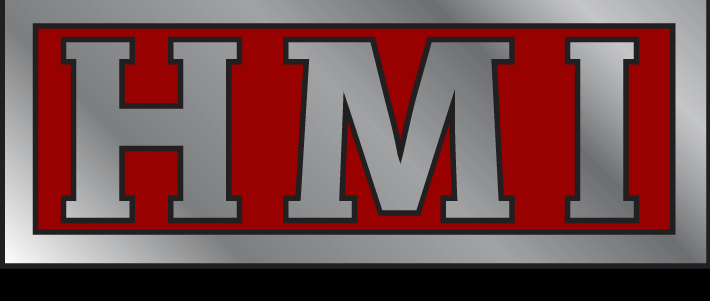Lo-Pro Calf Hutch Bedding Manual
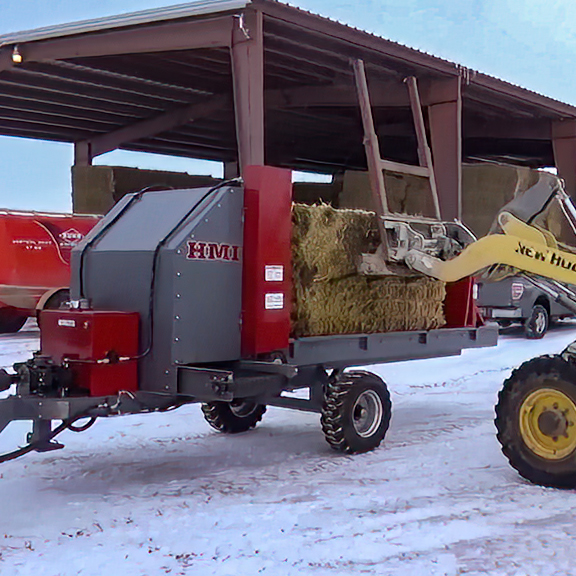
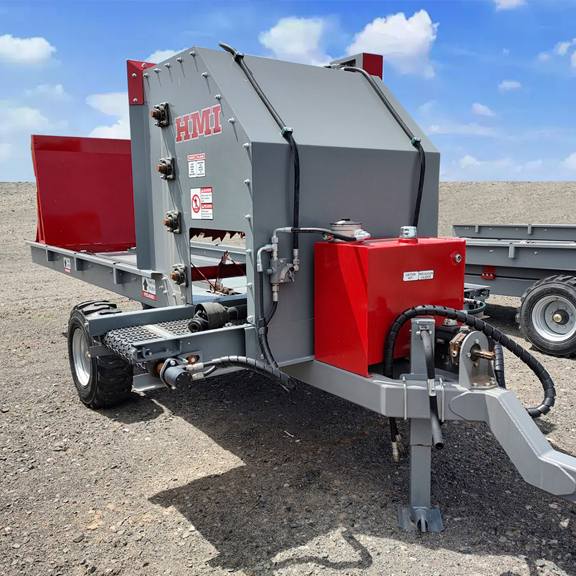
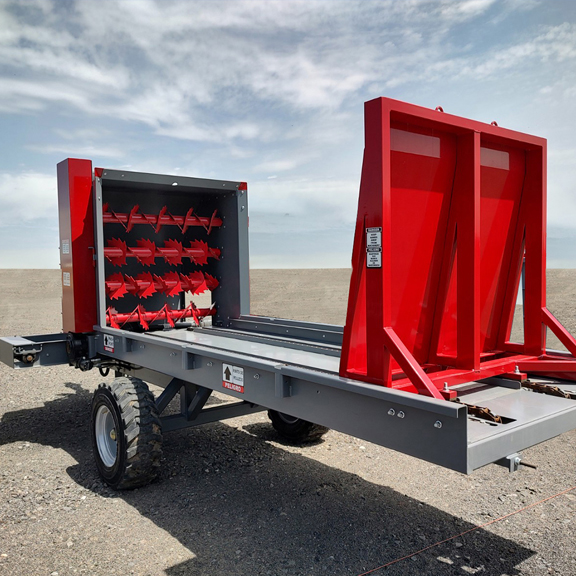
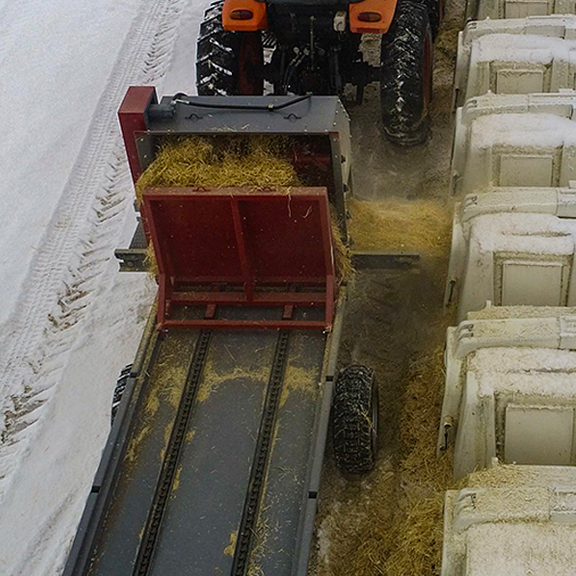
Listed below are common practices that may or may not be applicable to the products described in this manual.
Look for the Safety Alert Symbol
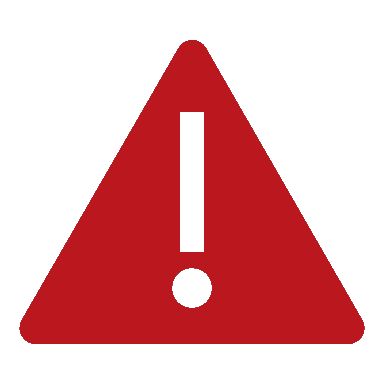
The SAFETY ALERT SYMBOL indicates there is a potential hazard to personal safety and extra precaution must be taken. When you see this symbol, be alert and carefully read the message that follows it. Hazard control, and accident prevention are dependent upon the awareness, concern, prudence and proper training of personnel involved in the operation, transport, maintenance, and storage of equipment.
Be Aware of Signal Words
A signal word designates a degree or level of hazard seriousness. They are:
DANGER:
Indicates a hazardous situation that, if not avoided, will result in death or serious injury.
WARNING:
Indicates a hazardous situation that, if not avoided, could result in death or serious injury.
Listed below are common practices that may or may not be applicable to the products described in this manual.
Safety at All Times
Careful operation is your best assurance against an accident. All operators, no matter how much experience they may have, should carefully read this manual and other related manuals before operating this power machine and this implement.
- Thoroughly read and understand the “Safety Label” section. Read all instructions noted on them.
- Do not operate the equipment while under the influence of drugs or alcohol as they impair the ability to safely and properly operate the equipment.
- The operator should be familiar with all functions of the power machine and attached implement, and be able to handle emergencies quickly.
- Keep all bystanders away from equipment and work area.
- Operate power machine and controls from the driver’s seat only.
- Never dismount from a moving power machine or leave power machine unattended with engine running.
- Do not allow anyone to stand between implements and power machine while attempting to connect or disconnect them.
- Keep hand, feet and clothing away from power-driven parts.
- While transporting and operating equipment, watch out for objects overhead and along side such as fences, trees, buildings, wires, etc.
- Do not turn power machine so tight as to cause hitched implement to contact the power machine’s rear wheel.
- Store implement in a safe and secure area where children do not plate. When needed, secure implement against falling with support blocks and/or shipping locks.
Safety Precautions for Children
Tragedy can occur if the operator is not alert to the presence of children. Children are generally attracted to implements and their work.
- Never assume children will remain where you last saw them.
- Keep children out of the work area and under the watchful eye of a responsible adult.
- Be alert and shut the implement and power machine down if children enter the work area.
- Never carry children on the power machine or implement. There is not a safe place for them to ride. They may fall off and be run over or interfere with the control of the power machine.
- Never allow children to operate the power machine, even under adult supervision.
Power Machine Shutdown & Storage
- If engaged, disengage power take-off.
- Park on solid, level ground and lower implements to ground or onto support blocks.
- Put power machine in part or set park brake
- Turn off engine and remove ignition key to prevent unauthorized starting.
- Relieve all hydraulic pressure to auxiliary hydraulic lines.
- Wait for all components to stop before leaving the operator’s seat.
- Use steps, grab-handles and anti-slip surfaces when stepping on and off the power machine.
Use a Safety Chain
- A safety chain will help control drawn machinery should it separate from the power machine or tow vehicle.
- Use a chain with the strength rating equal to or greater than the gross weight of the towed implement
- Attach the chain to the power machine’s or tow vehicle’s draw bar support or other specified anchor location. Allow only enough slack in the chain to permit turning.
- Always hutch the implement to the machine towing it. Do not use the safety chain to tow the implement.
Tire Safety
- Tire changing can be dangerous and must be performed by trained personnel using the correct tools and equipment.
- Always properly match the wheel size to the properly sized tire.
- Always maintain correct tire pressure. Do not inflate tires above the recommended pressures shown in the Operator’s Manual or printed on the tires themselves.
- When inflating tires, use a clip-on chuck and extension hose long enough to allow you to stand to one side and NOT in front of or over the tire assembly. Use a safety cage if available.
- Securely support the implement when changing a wheel.
- When removing and installing wheels, use wheel handling equipment adequate for the weight involved.
- Make sure wheel bolts have been tightened to the specified torque.
Practice Safe Maintenance
- Understand procedure before doing work. Refer to the Operator’s Manual for additional information.
- Work on a level surface in a clean, dry area that is well-lit.
- Lower implement to the ground and follow all shutdown procedures before leaving the operator’s seat to perform maintenance
- Do not work under any hydraulically supported equipment. It can settle, suddenly lead down, or be lowered accidentally. If it is necessary to work under the equipment, securely support it with stands or suitable blocking beforehand.
- Use properly grounded electrical outlets and tools.
- Use correct tools and equipment for the job that are in good condition.
- Allow equipment to cool before working on it.
- Disconnect battery ground cable (-) before servicing or adjusting electrical systems or before welding on implement.
- Inspect all parts. Make certain parts are in good condition & installed properly.
- Replace parts on this implement with genuine Hatfield parts only. Do not alter this implement in a way which will adversely affect its performance.
- Do not grease or oil implement while it is in operation.
- Remove any buildup of grease, oil, and/or debris.
- Always make sure any material and waste products from the repair and maintenance of the implement are properly collected and disposed.
- Do not weld or torch galvanized metal as it will release toxic fumes.
Prepare for Emergencies
- Be prepared if a fire starts
- Keep a first aid kit and fire extinguisher handy.
- Keep emergency number for doctor, ambulance, and fire department near the phone.
Use Safety Lights and Devices
- A slow-moving power machine can create a hazard when driven on public roads. They are difficult to see, especially at night. Use the Slow-Moving Vehicle (SMV) Sign when on public roads.
- Flashing warning lights and turn signals are recommended whenever driving on public roads.
Wear Personal Protective Equipment
- Wear protective clothing and equipment appropriate for the job such as safety shoes, safety glasses, hard hat, dust mask, and ear plugs.
- Clothing should fit snug without fringes and pull strings to avoid entanglement with moving parts.
- Prolonged exposure to loud noise can cause hearing impairment or hearing loss. Wear suitable hearing protection such as earmuffs or earplugs.
- Operating a machine safely requires the operator’s full attention. Avoid wearing headphones while operating
Use Seat Belt and ROPS
- Use of a CAB or roll-over-protective-structures (ROPS) and seat belt is recommended in almost all power machines.
- If ROPS is in the locked-up position, fasten seat belt snugly and securely to help protect against serious injury or death from falling and machine overturn.
Avoid High Pressure Fluids
- Escaping fluid under pressure will penetrate the skin or eyes causing serious injury.
- Relieve all residual pressure before disconnecting hydraulic lines or performing work on the hydraulic system.
- Make sure all hydraulic fluid connections are properly tightened/torqued and all hydraulic hoses and lines are in good condition before applying pressure to the system.
- Use a piece of paper or cardboards, NOT BODY PARTS, to check for suspected leaks.
- Wear protective gloves and safety glasses or goggles when working with hydraulic systems.
- DO NOT DELAY. If an accident occurs, seek immediate
Keep Riders Off Machinery
- Never carry riders on the tractor or implement.
- Riders obstruct operator’s view and interfere with the control of the power machine.
- Riders can be struck by objects or thrown from equipment.
- Never use the power machine to lift or transport riders.
Avoid Crystalline Silica (quartz) Dust
Because crystalline silica is a basic component of sand and granite, many activities at construction sites produce dust containing crystalline silica. Trenching, sawing and boring of material containing crystalline silica can produce dust containing crystalline silica particles. This dust can cause serious injury to the lungs (silicosis).
There are guidelines which should be followed if crystalline silica (quartz) is present in the dust.
- Be aware of and follow OSHA (or other local, State, or Federal) guidelines for exposure to airborne crystalline silica.
- Know the work operations where exposure to crystalline silica may occur.
- Participate in air monitoring or training programs offered by the employer.
- Be aware of and use optional equipment controls such as water sprays, local exhaust ventilation, and enclosed cabs with positive pressure air conditioning if the machine has such equipment. Otherwise, respirators shall be worn.
- Where respirators are required, wear a respirator approved for protection against crystalline silica containing dust. Do not alter respirator in any way. Workers who use tight-fitting respirators can not have beards/mustaches which interfere with the respirator seal to the face.
- If possible, change into disposable or washable work clothes at the work side; shower and change into clean clothing before leaving the work site.
- Do not eat, drink, use tobacco products, or apply cosmetics in areas where there is dust containing crystalline silica.
Handle Chemicals Properly
- Protective clothing should be worn.
- Handle all chemicals with care.
- Follow instructions on container label.
- Agricultural chemicals can be dangerous. Improper use can seriously injure persons, animals, plants, soil, and property.
- Inhaling smoke from any type of chemical fire can be a health hazard.
- Store or dispose of unused chemicals as specified by the chemical manufacturer.
Dig Safe — Avoid Underground Utilities
- USA: Call 811. CAN: digsafecanada.ca Always contact your local utility companies (electrical, telephone, gas, water, sewer, and others) before digging so that they may mark the location of any underground services in the area.
- Be sure to ask how close you can work to the marks they positioned.
Transport Safely
- Comply with federal, state and local laws.
- Use towing vehicle and trailer of adequate size and capacity. Secure equipment towed on a trailer with tie downs and chains
- Sudden braking can cause a towed trailer to swerve unexpectedly. Reduce speed if towed trailer is not equipped with brakes.
- Avoid contact with any overhead utility lines or electrically charged conductors.
- Always drive with load on end of loader arms low to the ground.
- Always drive straight up and down steep inclines with heavy end of skid steer on the “uphill” side
- Maximum transport speed for an attached equipment is 20 mpg (32km/h). DO NOT EXCEED
- As a guideline, use the following maximum speed weight ratios for attached equipment: 20 mph (32 km/h) when weight of attached equipment is less than or equal to the weight of the tow vehicle. 10 mph (16 km/h) when weight of attached equipment exceeds the weight of the tow vehicle but not more than double the weight.
- IMPORTANT: Do not tow a load that is more than double the weight of the vehicle towing the load.
Safety Labels
Your Hutch Bedding Trailer comes equipped with all safety labels in place. They were designed to help you safely operate your equipment. Read and follow their directions.
- Keep all safety labels clean and legible.
- Refer to this section for proper label placement. Replace all damaged or missing labels. Order new labels from www.hatfieldmfg.com.
- Some new equipment installed during repair requires safety labels to be affixed to the replaced component as specified herein. When ordering new components make sure the correct safety labels are included in the request.
- Refer to this section for proper label placement. To install new labels: Clean Surface area where label is to be placed. Spray soapy water onto the cleaned area. Peel backing from label and press label firmly onto the surface. Squeeze out air bubbles with edge of a credit card or with a similar type of straight edge.
Record your machine details: Serial Number, Model Number and Delivery Date.
Trailer Specifications
- Model: Standard Hutch Bedding Trailer (1 and 2 Bale Models)
- Spindle: 6,000 lb. rated Agricultural
- Bearings: Inner: LM506849 (Race: 506810) Outer: LM501310 (Race: LM501310) Seal: SL275
- Wheel: 9.75 in. X 16.5 in. Bolt Pattern: 8 Bolt, 8 in. center line diameter
- Tire: SKS-1 12.00 X 16.5
- Hitch: Clevis Type Max Capacity: 20,000 lb. Clevis Pin Size: 1 in. diameter by 8 in. length
- Jack: Bulldog Model 182410 Max Capacity: Static 12,000 lb. Lift 10,000 lb.
- Hydraulic Oil: Chevron THF 1000 or equivalent Volume: 35 gallons Filter: RBSZ10ELEMENT
Operating the Calf Hutch Bedding Trailer
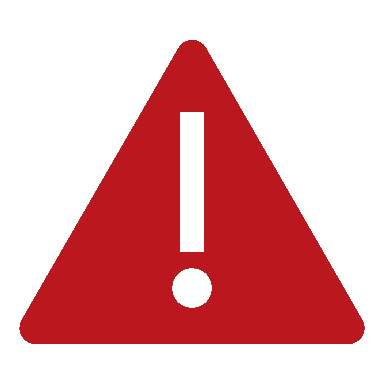
WARNING
To avoid serious injury or death:
Read all instructions before attempting to operate this equipment. Obey all warning labels on machine.
- Perform a “dry run” so that you are familiar with all the controls before adding straw and operating the trailer while driving the tow vehicle
- Never exceed 20 mph (32 km/h) while towing this trailer
- Full trailers will react differently, extra care and lower speed will be required especially on uneven terrain.
- This trailer is designed to run on a 540 rpm PTO, DO NOT connect it to a 1000 rpm PTO
- Never attempt to clear a jam by hand or with an implement without first shutting off the PTO drive.
- All strings and bands must be removed from the straw bales before running them through the machine.
- This machine is designed for straw or hay only, never attempt to run any other material through it.
- In the event of an emergency, the fastest way to stop the moving parts of the trailer is to shut off the PTO drive and the remote in the tractor or shut off the tractor!
First Run
- Your Hutch Bedding may be delivered with the conveyor in a shipping position. Upon Receiving your Hutch Bedding Trailer, you may need to extend the conveyor out of the right side. To do this, unbolt the four bolts holding the conveyor into beater housing as shown. Slide the conveyor until the next set of holes line up and reattach the conveyor with the same four bolts.
- The PTO Drive Shaft was likely shipped on the bed of the trailer and must be brought forward and attached to the gearbox and pump in front of the hydraulic tank.
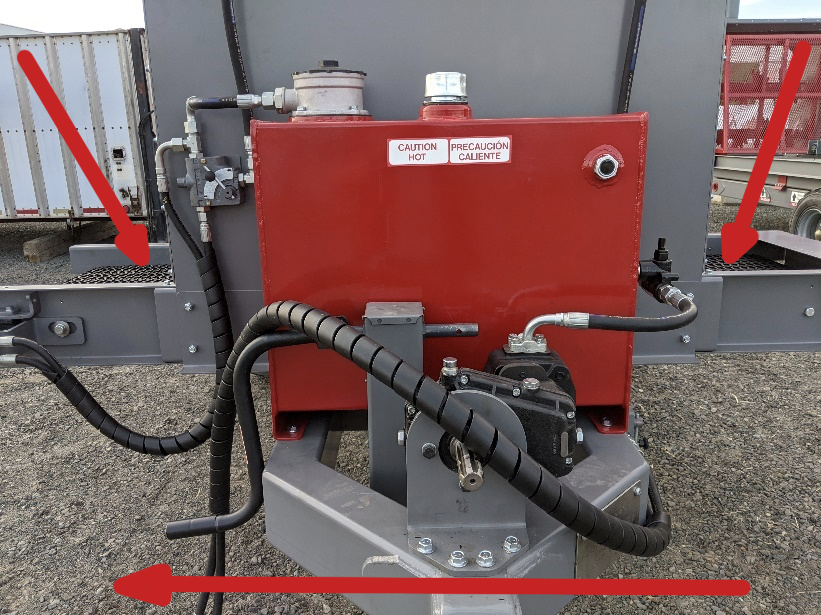
Hitch Mount
- This Trailer is equipped with a Clevis Style Hitch. The hitch can be unbolted to adjust the height to match the towing vehicle. Always ensure that ALL THREE bolts are used to assemble the hitch and that they are torqued to 200 ft-lb.
- To hook up the trailer, simply align the tongue BETWEEN the hitch plates and slide the Clevis Pin down through all the plates. The Clevis Pin should be secured with a Hairpin Clip.

Jack Stand
- Once the Hitch Mount is secured to the tow vehicle, the Jack Crank can be wound Counter Clockwise (Anticlockwise) until the baseplate is off of the ground. Now pull on the pin that holds the jack leg, lift up on the handle and release the pin to lock the jack up out of the way, this will prevent the jack from getting damaged during trailer use.
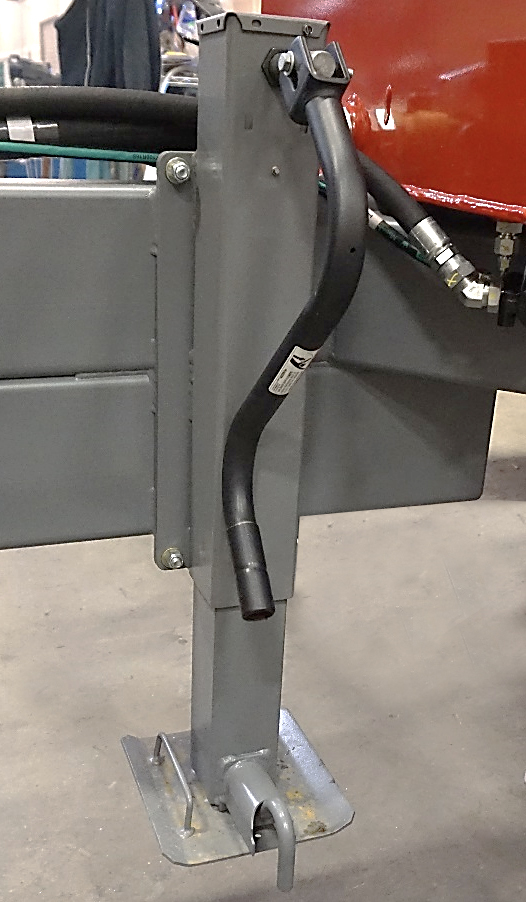
Connecting the PTO Pump
- The Beaters and Conveyor on the Hutch Bedding Trailer are powered by a PTO pump that is connected via a drive shaft to the tow vehicle’s rear PTO Drive.
- To connect the Drive Shaft:
- Your Hutch Bedding Trailer is equipped with a telescoping drive shaft. The drive manufacturer states that you must have at least 6 inches of overlap between the two halves. A maximum overlap would still leave 2 inches of clearance before they bottom out.
- Hook the tow vehicle up to the trailer, attach the drive shaft and inspect the fit when traveling straight and at maximum turn. If it does not meet the specification, change the draw bar length or replace the drive shaft with one correctly sized for you tow vehicle
- Fasten the chain from the end of the drive cover to the tractor snuggly so that the safety cover doesn’t spin on the PTO.
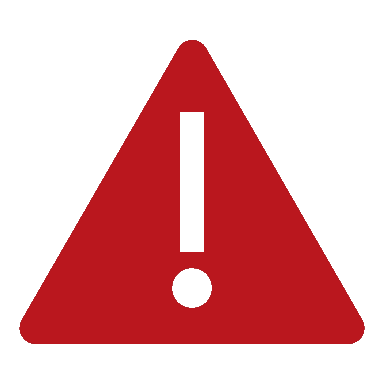
WARNING
Never run the PTO Pump without properly securing the anti-wrap bar.
Connecting the Hydraulic Remotes
- The Push Rack is controlled by one hydraulic remote. Simply hook the quick connect lines to the remote ports on the tow vehicle (see your vehicle’s operator manual for details about your remotes operation and maintenance). If the push rack is running “backwards” to how you think it should, simply swap the remote lines at the quick connect ports. Some operators prefer that forward on the remote moves the push rack forward, others prefer that forward pushes the bales toward the beaters, either way is fine for the motors and the way that is most intuitive for the operator is the safest.
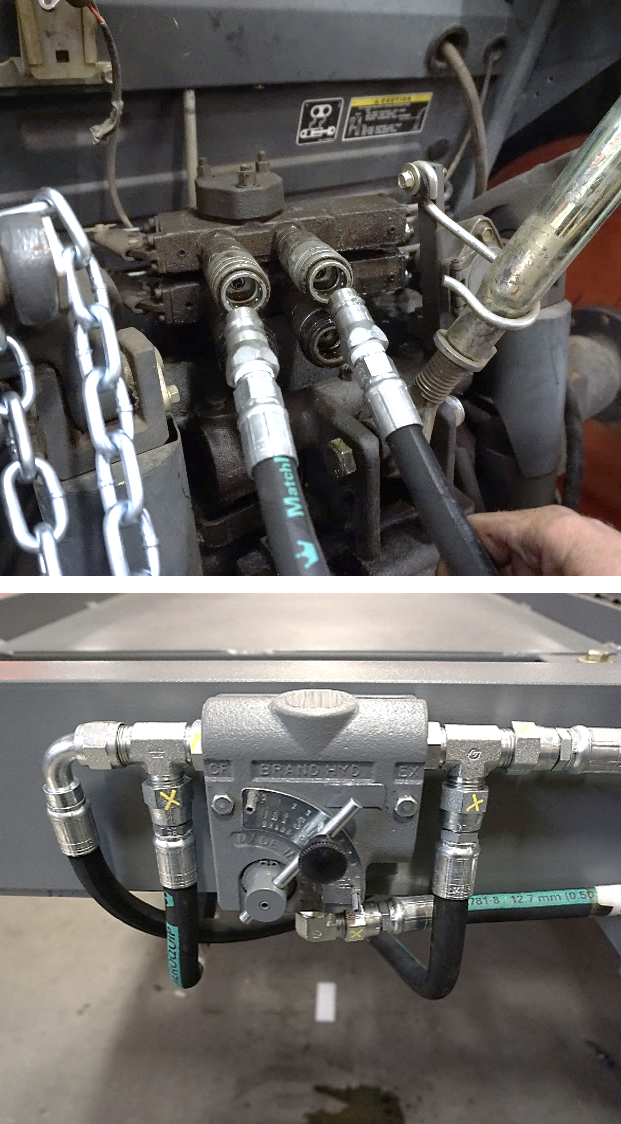
Adjusting Speeds
- The speed of the Push Rack travel can be adjusted at the flow control valve located on the side of the hydraulic tank (or just below it on the frame of the trailer). This will allow you to adjust the feed rate of the straw. When set properly, the flow control will save you from having to “feather” the controls in order to get the coverage you are trying to achieve.
- There is a second flow control on the front of the Beater housing (next to where the conveyor comes out) that controls the speed of the conveyor in proportion to the Beaters
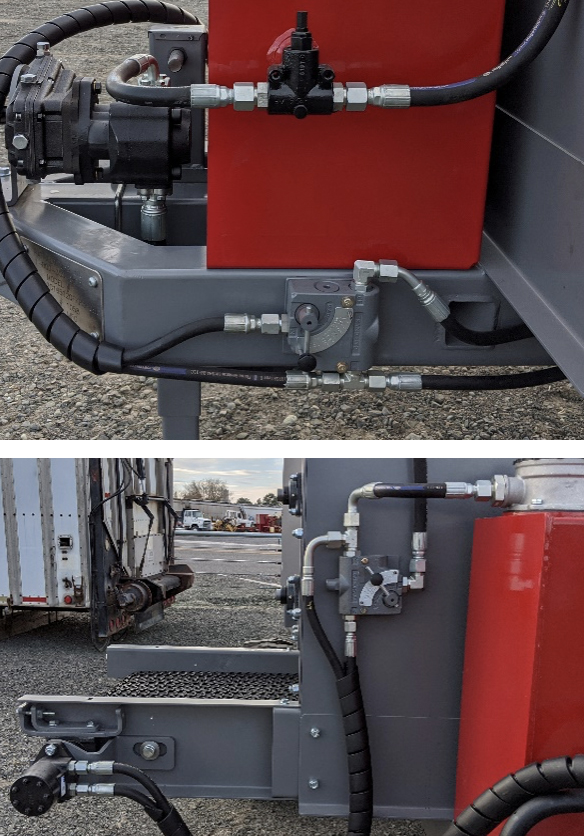
Loading Straw Bales
- Before putting straw bales on the Calf Hutch Bedding Trailer,, you need to move the push rack far enough forward to accommodate the number of bales you are going to process. The Calf Hutch Bedding Trailers are designed to process pairs of straw bales side by side. Care should be taken when loading bales to not damage the trailer with the loader. Don’t forget to cut the baling twine off before starting to process the straw through the machine! On the back of the push rack there is large ring and a chain to hold a trash barrel.
Maintenance
Lubrication
- The Calf Hutch Bedding Trailers have 13 lubrication points on it that all require the same high-quality bearing grease. See the chart for maintenance schedule.
| Part | # of points | How Much | How Often | Location |
|---|---|---|---|---|
| Rear Beater Shaft Bearings | 4 | 2 pumps | Monthly | On the outside of the beater housing, some are under the red covers. |
| Floor Drive Bearings | 5 | 1 pump | Monthly | Holes in the front and back of the top deck |
| Tires | 2 | 2 pumps | Quarterly | Under the center cap of the wheel hub |
| Jack | 2 | 2 pumps | Yearly | On the front face of the Jack near the top |
Hydraulic Fluid
- Fluid should be visible in the sight glass when warm, if not, top off with Chevron THF 1000 (or equivalent) only until it is visible in sight glass. DO NOT OVERFILL!
- Hydraulic Fluid and Filter should be replaced every 1500 operating hours.
Floor Drive Chains
- The Floor Drive chains should be checked seasonally for tension. With the trailer unloaded and the push rack in the center, go to the front of the trailer and with a flashlight, look down the return tubes on the underside of the trailer and check to see that the floor chains are at least 1/2 in. up from the bottom of the tube at their lowest point.
- If they need to be tightened, first loosen the two bolts on the floor drive bearing and the jamb nut on the end of the floor drive tensioner.
- Turn the tensioner nut clockwise until the floor chain reaches the desired tension.
- Retighten the jamb nut and the two bolts on the floor drive bearing to a torque of 50 ft-lb.
- Make sure to Follow this procedure for both floor chains.
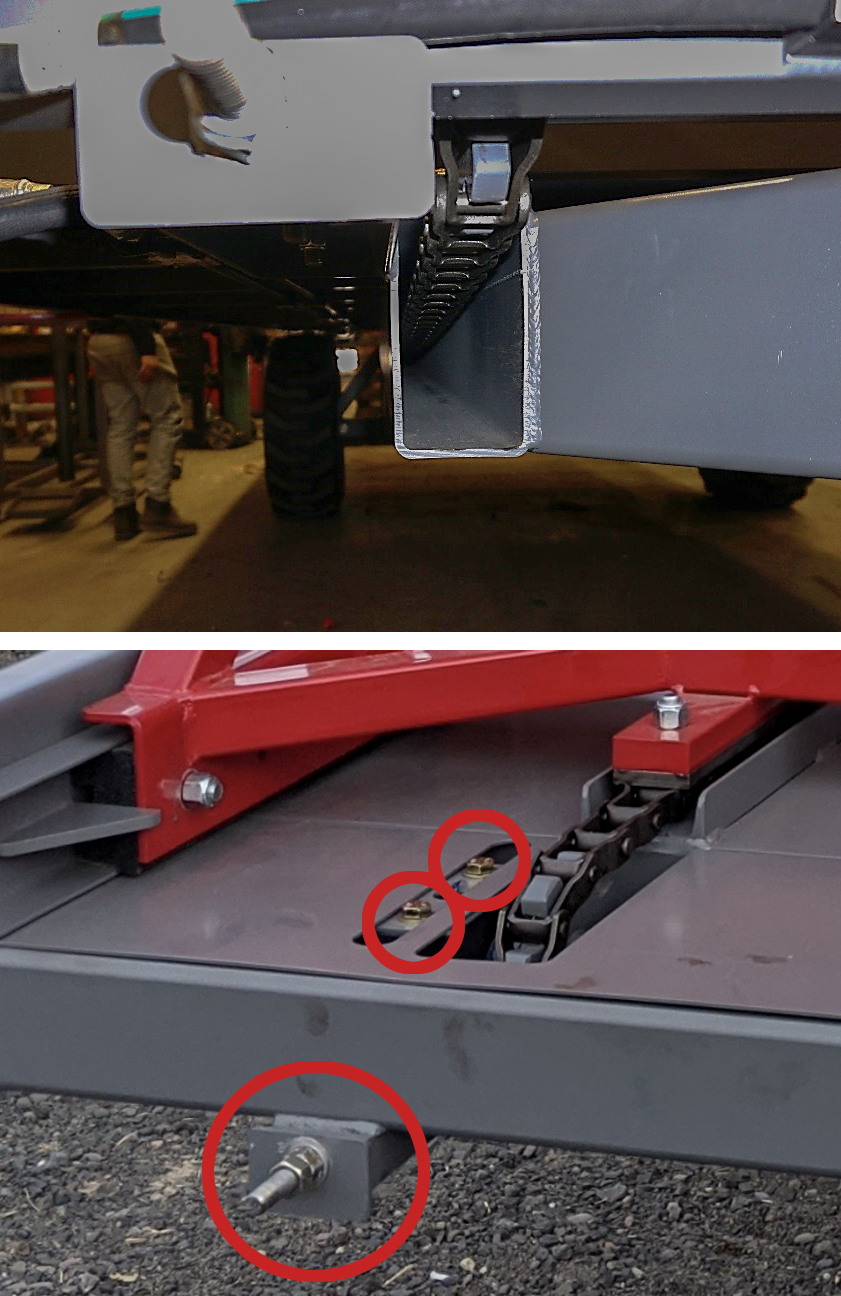
Main Office & Manufacturing
1823 Shoestring Road | Gooding, Idaho 83330 | Toll Free: 800.359.8171 | 208.934.5182 | Fax: 208.934.8892
Sales | Parts | Manuals | Financing | Our Company | Contact Us
2025 Hatfield Manufacturing, Inc.
